Key Takeaways:
The cost to hire a fuel delivery app developer varies widely based on location, expertise, and app complexity, with rates ranging from $25 to $80 per hour per developer.
Fuel delivery apps solve the problem of convenience by eliminating gas station visits, offering real-time tracking, secure payments, and faster service for customers.
Entrepreneurs should focus on hiring developers with proven expertise in on-demand app development to ensure scalability, compliance, and long-term reliability.
Cross-platform development with frameworks like Flutter or React Native helps reduce costs and accelerates time-to-market without compromising user experience.
Hidden costs like licensing, app store fees, server infrastructure, and post-launch maintenance often add up and should be budgeted from the start.
The global fuel delivery market is projected to hit $11.93 billion by 2035, making now the best time to invest in development.
Partnering with JPLoft ensures access to skilled teams, end-to-end fuel delivery app development, and global expertise to transform an idea into a successful, market-ready product.
When people search “how much does it cost to hire a fuel delivery app developer,” they’re usually looking for clear numbers and the key factors that shape those numbers.
The answer is simple: the cost to hire a fuel delivery app developer varies from $25 to $80 per developer.
Entrepreneurs and investors entering the booming on-demand fuel delivery space can’t afford to just look at hourly rates; they need to consider developer expertise, location, hiring models, and long-term support.
Choosing the right developer is less about finding the cheapest option and more about finding the most capable partner who can turn an idea into a scalable, profitable product.
This blog breaks down everything entrepreneurs and investors should know about hiring potential developers, giving them practical insights to plan budgets and make smart hiring decisions in 2025.
Let’s learn it all together.
Fuel Delivery App And Its Market Stats
A fuel delivery app is a mobile app that helps users order petrol and different types of fuel to be delivered directly to their location. One of the crucial roles of the fuel delivery apps is that they bring fuel directly to the customers’ locations by eliminating gas station visits.
Additionally, the on-demand apps do offer convenience, digital payments, time savings, along with real-time tracking through empowering businesses to streamline operations and scale up in the growing mobile fuel delivery market.
Let’s evaluate a brief on the growing fuel delivery app market, below
-
The global mobile fuel delivery market is projected to reach USD 5.84 billion in 2025, and is expected to approach USD 11.93 billion by 2035, which reflects a growth of 7.4% CAGR.
-
Based on the fuel delivery market statistics, the market growth is projected to reach US$8.9 billion by the end of 2031.
-
Additionally, as per the reports of GlobeNewsWire ,the global fuel delivery system market size is expected to reach $8.75 billion by 2032.
Considering these growing market stats, it can be stated that it's the right time to invest in this market.
Well, when you decide to bring your fuel delivery app startup idea into reality, one of the important parameters is identifying the right team of developers who are skilled to convert your app into a successful story.
Another significant reason is, the fuel delivery app developers are experts; they are well aware of the current market, tools, technologies, and trends, helpful to capture the core audience.
Now, as you are ready to bring an idea into reality, let’s look forward to the different types of developers you can hire in the following section.
Types of Fuel Delivery App Developers to Hire
When you start an online fuel delivery app business, it becomes essential to learn the market and audience’s preferences while they order fuel.
And by hiring the right team of developers, you can take the back seat and enjoy the journey from idea to an actual product.
In the case of an app or even a website, hiring a team of experts can convert your dream into a success. Let’s figure out the different types of fuel app developers you can hire in 2025.
Type 1: Freelancers
Freelancers are solo professionals who can take care of certain app development tasks, such as coding, UI/UX, or backend integration. They are affordable and flexible but lack the consistency and full-stack skills of a team. Suitable for startups with tight budgets.
Cost to hire: $20 – $150 per hour.
Let’s discuss the pros and Cons of hiring freelancers in the table below.
|
Pros |
Cons |
|
Lower cost compared to agencies or in-house teams |
Limited availability and commitment |
|
Flexible working hours and a quick hiring process |
Quality may vary due to a lack of supervision |
|
Wide global talent pool to choose from |
Communication gaps and time-zone issues |
Type 2: In-house Developers
Employing an in-house developer translates to having committed expertise solely dedicated to your organization. It guarantees complete control, enhanced communication, and your long-term vision aligning with theirs. But it includes overhead expenses such as salaries, infrastructure, and benefits.
Cost to hire: $70,000 – $120,000 annually per developer.
Let’s discuss the pros and Cons of hiring in-house developers in the table below.
|
Pros |
Cons |
|
Full control over the development process |
Higher costs due to salaries, benefits, and infrastructure |
|
Direct communication and faster collaboration |
Limited scalability if the project scope grows |
|
Strong alignment with company culture and goals |
Hiring and retention challenges increase time and effort |
Type 3: Outsourcing Agencies
A mobile app development company brings together designers, developers, testers, and project managers under one roof. This ensures scalable, high-quality fuel delivery apps built on time and within standards.
It removes management hassles and reduces risks. For businesses aiming at growth, it stands out as the most dependable way to hire developers.
Hire cost: $25 – $80 per hour based on location.
Let’s discuss the pros and Cons of hiring outsourcing agencies in the table below.
|
Pros |
Cons |
|
Access to a full team of experts (designers, developers, testers, PMs). |
Limited direct control compared to in-house teams. |
|
Scalable solutions with on-time delivery and high quality. |
Dependency on external communication and processes. |
|
Reduced management hassles with end-to-end project handling. |
Possible timezone differences in global collaborations. |
Type 4: Dedicated Remote Developers
A compromise between in-house workers and freelancers, committed remote developers work just for your project but from their own office.
Hire dedicated app developers who can provide flexibility, less expense than in-house, and greater responsibility than freelancers, particularly when employed through trusted platforms.
Cost to hire: $30 – $100 per hour.
Let’s discuss the pros and Cons of hiring dedicated remote developers in the table below.
|
Pros |
Cons |
|
Cost-effective compared to in-house teams |
Time zone differences can cause delays |
|
Focused attention on your project |
Requires strong communication tools |
|
Flexible hiring models (hourly/monthly) |
Less control than in-house developers |
Type 5: Staff Augmentation
Staff augmentation services help companies to extend their in-house teams by hiring skilled professionals on a temporary or project basis.
This model helps businesses scale quickly, access specialized expertise, and reduce the time and cost involved in traditional hiring. It’s particularly useful for IT projects that need flexibility, faster delivery, or short-term technical support.
Cost to hire: $35 – $100 per hour.
|
Pros |
Cons |
|
Quick access to skilled professionals |
May face onboarding delays |
|
Flexible team scaling |
Risk of dependency on external talent |
|
Cost-effective for short projects |
Less control over remote staff |
After discussing the types, let’s switch to the complete cost to hire a fuel delivery app developer in the following section.
Cost to Hire a Fuel Delivery App Developer
The cost to hire a fuel delivery app developer can range from $25 to $80 per developer, per hour. This cost varies due to various factors, including skills, location, features, and the complexity of the app, among others.
For instance, developers in South Asis charge lower compared to US or UK-based developers. Similarly, an AI-based integrated feature will cost you high, compared to the basic level of features.
Additional factors impacting the cost to develop a fuel delivery app include project timelines, tech stack selection, and post-launch maintenance, which also influence the overall investment.
Let’s break down the factors impacting the overall cost to hire a fuel delivery app developer in the following section.
|
Region/Category |
Average Hourly Rate |
Details |
|
Minimum Cost |
$25 per hour |
Entry-level developers or outsourcing in cost-effective regions. |
|
Average Cost |
$40 – $60 per hour |
Mid-level developers with solid experience in app development. |
|
Maximum Cost |
$80 per hour |
Senior developers or agencies offering advanced expertise and premium services. |
Factors Impacting the Cost to Hire a Fuel Delivery App Developer
Learning about the diversified factors will help you to estimate the complete cost to hire a fuel delivery app developer.
If it's about competing with the top fuel delivery apps, it's essential to know the diversified factors impacting the complete cost.
And when it's about hiring the fuel delivery app developer, let's learn about the factors below.
1. Developer's Location
Physical location is one of the largest cost drivers, and hiring through a reputed mobile app development company in Denver often costs more compared to developers in Eastern Europe or Asia.
The explanation lies in living expenses, demand, and regional knowledge. Selecting the proper location typically weighs quality against cost.
|
Region |
Average Cost (Per Hour / Developer) |
Details |
|
Asian Region (India, Philippines, etc.) |
$20 – $80 |
Most affordable; skilled developers with wide outsourcing options, ideal for startups and mid-scale projects. |
|
United Kingdom (UK) |
$50 – $200 |
Higher costs due to market demand and compliance standards; suited for enterprises needing strict quality benchmarks. |
|
United States (US) |
$40 – $120 |
Premium rates reflecting advanced expertise, innovation, and strong regulatory knowledge. |
|
European Region (Germany, France, etc.) |
$50 – $190 |
Balanced pricing, strong technical proficiency, and high-quality coding practices. |
2. Developer's Expertise and Experience
An experienced developer with years of experience in mobile app development will be more expensive than a junior-level professional.
Senior mobile app developers not only possess technical experience but also experience working on complex problems, producing fewer bugs and quicker completion.
Although they are more expensive to hire, the long-term advantages, such as improved performance, security, and scalability, outweigh the upfront cost.
|
Expertise Level |
Average Cost (Per Hour / Developer) |
Details |
|
Junior Developer |
$10 – $25 |
Basic coding skills, suitable for simple features or support tasks. |
|
Mid-Level Developer |
$25 – $50 |
Solid experience in app development, capable of handling moderate complexity projects. |
|
Senior Developer |
$50 – $100 |
Extensive expertise, handles complex architectures, integrations, and performance optimization. |
|
Specialized Expert (AI, Security, Blockchain, etc.) |
$80 – $150+ |
Niche skills for advanced features, ensuring scalability, innovation, and compliance. |
3. App Features and Functionalities
The sophistication of your fuel delivery app's features contributes significantly to cost. A simple app with fuel ordering, GPS tracking, and digital payments would be cheaper.
Advanced features such as AI-based fuel price forecasting, push messaging, or loyalty schemes can push up the costs. With every extra feature comes additional development time, testing, and total expenses.
|
App Complexity Level |
Features Included |
Hourly / Per Developer Cost |
|
Basic App |
Fuel booking, GPS tracking, digital payments |
$10 – $20 per hour |
|
Moderate App |
Real-time tracking, push notifications, loyalty programs, and multiple payment gateways |
$20 – $35 per hour |
|
Advanced App |
AI-driven price predictions, analytics dashboard, multi-platform support, and advanced security |
$35 – $50 per hour |
4. Design and User Experience (UI/UX)
A fuel delivery app is only as useful as its user-friendliness. Developing a neat, user-friendly interface takes time, research, and imagination from UI/UX designers.
The price increases with more complex fuel delivery app designs like animations, interactive maps, or bespoke branding. Although design investments make up part of the cost, they greatly enhance user retention and satisfaction, which directly influences business expansion.
|
Design Complexity |
Hourly Cost (Per Developer) |
Details |
|
Basic Design |
$10 – $20 per hour |
Simple layouts with standard UI elements and minimal customization. Best suited for MVPs or early-stage apps. |
|
Moderate Design |
$20 – $35 per hour |
Custom themes, smooth navigation, interactive maps, and a user-friendly flow that enhances engagement. |
|
Advanced Design |
$35 – $50 per hour |
Highly polished UI with animations, micro-interactions, branding, and advanced usability features for a premium user experience. |
5. Platform Choosing (iOS, Android, or Both)
Whether to develop for Android, iOS, or both is another huge consideration. A single-platform app will be less expensive, but companies aiming for broader audiences typically require cross-platform development. You can publish your fuel delivery app on the App Store by successfully learning about its guidelines.
When it comes to submitting your app on the Play Store ,the experts must be well-versed in native applications, which provide optimal performance but involve distinct codebases, thereby increasing expenses. Cost savings can be achieved through hybrid or cross-platform, but there can be performance compromises.
|
Platform |
Technology Level |
Average Cost Range (Per Hour / Developer) |
Details |
|
iOS (Apple) |
Native (Swift, Objective-C) |
$30 – $70 per hour |
Offers high security and smooth performance; slightly costlier due to strict App Store guidelines. |
|
Android |
Native (Kotlin, Java) |
$20 – $60 per hour |
Widely used platform; costs vary with device compatibility and extensive testing needs. |
|
Both (iOS & Android) |
Cross-Platform (Flutter, React Native) |
$10 – $50 per hour |
Cost-efficient with a single codebase; faster launch, but may have performance trade-offs for advanced features. |
6. Backend Development & Technology Stack
The fuel delivery app backend can handle user information, payments, and order tracking. Selecting an appropriate tech stack (e.g., Node.js, Laravel, or Python) and configuring scalable cloud infrastructure contribute to development expenses.
More sophisticated apps, involving multiple integrations, APIs, and real-time tracking, require more robust and costly backend systems.
|
Tech Stack Level |
Examples |
Average Cost (Per Hour / Developer) |
Details |
|
Basic Technologies |
PHP, MySQL, HTML/CSS, basic APIs |
$10 – $30 |
Suitable for simple apps with limited features and minimal backend needs. |
|
Intermediate Technologies |
Node.js, React Native, Laravel, Firebase |
$30 – $60 |
Balances performance and cost; ideal for cross-platform apps with standard integrations. |
|
Advanced Technologies |
AI/ML, Blockchain, AR/VR, Kubernetes, Cloud (AWS/GCP) |
$60 – $120 |
High-end tech for complex features, scalability, and real-time processing; best for enterprise-grade apps. |
7. Payment Gateway Integration & Security Features
Fuel delivery apps handle sensitive user information and financial transactions, so security is not optional. Implementation of secure payment gateways such as Stripe, PayPal, or Razorpay, as well as features such as data encryption, multi-factor authentication, and GDPR compliance, adds to development work.
You should evaluate the API integration for the fuel delivery app to ensure safe and resolves issues for the targeted audience
Although these incur expenses, they instill confidence and help safeguard your brand reputation.
|
Platform |
Technology Level |
Average Cost (Per Hour / Developer) |
Details |
|
iOS (Apple) |
Native (Swift, Objective-C) |
$30 – $70 |
Offers higher security and smooth performance; slightly costlier due to strict App Store guidelines. |
|
Android |
Native (Kotlin, Java) |
$25 – $65 |
Widest user base; development costs vary with device compatibility and extensive testing requirements. |
|
Both (iOS & Android) |
Cross-Platform (Flutter, React Native) |
$10 – $50 |
Cost-efficient with one codebase for both platforms; faster to launch, though may have performance trade-offs in advanced features. |
8. Maintenance and Post-Launch Support
Hiring developers is not only about the launch; long-term maintenance is involved as well.
Keeping it updated, fixed for bugs, patched for security, and working with new OS versions means an ongoing investment. The fuel delivery app maintenance comprises identifying the potential bugs, fixing the bugs, evaluating the diversified risks, and then mitigating them all, before they impact the user experience.
Maintenance for a year usually costs between 15% to 20% of what's spent on initial development. It's best to consider this upfront to prevent financial stress later on. Let’s check out the table below for more.
|
Level of Technology |
Scope of Support |
Estimated Cost (Per Hour / Developer) |
|
Basic Technology (simple apps with core features) |
Regular bug fixes, minor updates, and OS compatibility adjustments |
$10 – $25 |
|
Intermediate Technology (apps with GPS, payment gateways, analytics) |
Security patches, API updates, feature upgrades, performance optimization |
$25 – $50 |
|
Advanced Technology (AI, IoT, multi-platform apps) |
Continuous monitoring, advanced security, major feature rollouts, and cloud scaling |
$50 – $70 |
When you connect with a mobile app development company in the UK, it's important to look for the diversified scales and parameters they use for converting your idea into success.
Similarly, there are different hidden factors that you need to consider while hiring a fuel delivery app developer. Let’s learn about them in the following section.
Hidden Costs to Consider While Hiring a Fuel Delivery App Developer
If it's about building an app like CAFU, it's essential to look for the diversified parameters that are gaining users’ attention. And such apps do include certain hidden costs when it comes to hiring a qualified developer.
Yes, other than the factors such as location of the developer, skills, complex features, etc., hidden factors have a large impact on the complete cost to hire a fuel delivery app developer.
Let’s learn all the factors below.
1] Licensing and Compliance Expenses
When you consider the estimation of cost to hire fuel delivery app developers, it's essential to note that fuel delivery has stringent safety, transportation, and environmental regulations.
Obtaining licenses and permits, as well as legal compliance, has underlying costs that differ by location. The costs are imperative to run your app within the law.
2] Testing Across Devices and OS Versions
Quality assurance isn't single-testing. Maintaining compatibility on dozens of Android devices and iPhones, plus regular OS updates, takes additional hours from developers. This process cumulatively adds to development costs in the long run.
The fuel delivery app testing can impact the cost as it requires you to go through the diversified testing parameters, such as functional testing, performance testing, security testing, and many others.
3] Server and Hosting Infrastructure
Robust backend infrastructure is necessary for real-time tracking, secure storage, and intense user traffic. Hosting, cloud storage, and server scalability fees every month are overlooked but constitute a chronic sneaky expense.
4] App Store & Play Store Publishing Fees
Developers must publish apps through official stores. Submitting the app on the app store requires checking its important guidelines, as it will be helpful to avoid rejections. Apple charges $99 annually, while Google Play has a $25 one-time fee. These platform charges are mandatory, adding to initial costs.
5] Scalability & Upgrade Costs
As your app grows, you’ll likely add features, integrate new payment methods, or expand geographically. Scaling requires additional development, testing, and infrastructure, creating unplanned costs that emerge after launch.
6] Bug Fixing & Customer Support
After launching the product, customers can complain about bugs or seek enhancements. Ongoing bug fixing, security patches, and support staff are regular expenses that companies tend to underestimate while planning their budgets.
When you consider the hidden costs, one of the crucial things that you might come across is, there is any way to reduce the cost of hiring a fuel delivery app developer.
7] Use of Technologies such as AI
The implementation of AI in fuel delivery app development will help you reduce costs through automating the process of development. All you need here is to identify the potential developers who are aware of using artificial intelligence for improving the process and optimizing the overall cost.
The answer is “yes”, let's check out the strategies in the section below.
Tips to Reduce the Cost of Hiring a Fuel Delivery App Developer
If you want to excel in the competition of fuel delivery apps, it's essential to optimize the complete cost in all ways.
Optimizing the hiring cost of a fuel delivery app developer can be considered a challenge while building a fuel delivery app .
Hence, let's check out the strategies below for reducing the cost.
Tip 1: Establish Clear Requirements Upfront
Fuzzy requirements result in scope creep, overtime, and additional expenses. A well-defined feature list, design workflow, and essential functionalities help developers work with precision. This reduces unnecessary rework and keeps development on budget.
Tip 2: Get the Right Hiring Model
Rather than paying a full-time wage, use flexible models such as hourly or project employment. This way, you only pay for the work that you get done. It's particularly useful for startups and small companies that don't have much to spend.
Tip 3: Use Cross-Platform Development
Developing standalone native apps for Android and iOS can be expensive. Selecting cross-platform frameworks such as Flutter or React Native saves money by enabling the same codebase to execute on both platforms. This is time- and money-saving without loss of quality.
Tip 4: Outsource to Low-Cost Regions
Developer rates differ greatly geographically. Basing hiring in places such as Asia cuts the bill without sacrificing quality, as long as you hire from a good mobile app development company. Outsourcing also eliminates overhead costs such as office establishment and hardware.
Tip 5: Prioritize Essential Features First
Launch with a Minimum Viable Product (MVP) to lower the initial cost of development. Implement core features like fuel booking, payments, and GPS tracking first. Add more advanced features, such as AI-driven price forecasts or loyalty rewards, later once the budget has been accommodated.
Tip 6: Plan for Long-Term Maintenance
Rather than doing maintenance as an afterthought, factor it into your initial cost. Periodic updates avoid major headaches that will be expensive down the line. Having a good developer or agency providing post-launch maintenance packages saves money in the long term.
Till now, we have discussed the concept of fuel delivery apps, costs, types of fuel delivery app developers, and factors impacting the cost to hire fuel delivery app developers. Now, let’s look ahead with the strategies to consider before hiring a fuel delivery app developer in the section below.
Points to Consider Before Hiring a Fuel Delivery App Developer
Whether it's evaluating the time to develop a fuel delivery app or the cost, you should identify potential resources before hiring fuel delivery app developers.
Similarly, there are different strategies to consider before hiring a fuel delivery app developer. Let’s learn them all, below.
1. Technical Skills in On-Demand Applications
All developers may not possess equal skills. Have the developer demonstrate prior skills in developing on-demand applications with GPS support, secure payments, and real-time location tracking, since these are central to fuel delivery platforms.
2. Industry Compliance Knowledge
Fuel delivery entails processing sensitive information and regulatory standards. A proficient developer should be familiar with safety regulations, licensing, and compliance norms at the local level in order to steer clear of legal entanglements.
3. Portfolio and Previous Projects
Check the developer's previous projects to determine if they have created apps like yours. A good portfolio shows that they can develop scalable and user-friendly solutions within time frames.
4. Communication and Project Management
Clear communication guarantees your needs are well understood and developed. Developers or teams employing agile practices, frequent updates, and project management tools have higher chances of meeting expectations.
5. Post-Launch Support and Maintenance
Designing the app is just half the way. A good developer should also provide support, patches, and updates to maintain your app competitive and operational once released. Connecting with the leading mobile app maintenance services will help you identify potential bugs and errors and then mitigate them with regular maintenance and effective tools.
Partner with JPlLoft and Hire Fuel Delivery App Developers
When it comes to building a high-performing and scalable fuel delivery app, choosing the right development partner makes all the difference.
JPLoft stands out as a trusted name with years of experience in crafting next-gen mobility solutions tailored to business needs. By partnering with us, you don’t just hire developers; you gain access to a complete team of strategists, designers, developers, and testers who work together to deliver flawless solutions.
Our focus on innovation, security, and user-centric design ensures your app performs seamlessly and keeps customers coming back.
As a trusted fuel delivery app development company, we handle everything from GPS-enabled tracking to secure payment integration, ensuring each feature is built with precision and expertise.
With 1100+ projects delivered and a global presence, JPLoft has the proven capability to transform your idea into a fully functional, market-ready app. Collaborate with us today to accelerate growth and stay ahead of the competition.
Conclusion
Hiring the right fuel delivery app developer in 2025 is about much more than finding someone who can write code. It requires evaluating their technical expertise, understanding of the on-demand industry, compliance knowledge, and ability to deliver scalable, secure solutions.
Each hiring option, whether freelancers, in-house, remote developers, or mobile app development companies, has unique strengths and limitations. By carefully considering these aspects and aligning them with your business goals, you set the foundation for a reliable, growth-oriented app.
FAQs
Here, the cost to hire a fuel delivery app developer varies from $25 to $80 per developer. The cost depends on multiple factors such as developer location, expertise, and the complexity of features you need. While freelance developers may be budget-friendly, agencies or dedicated teams offer more reliability, structured processes, and long-term support, which is often a better investment for serious businesses.
Freelancers, in-house teams, and remote developers are good options, but a mobile app development company usually provides the best balance. They offer full teams, designers, developers, testers, and managers, ensuring your app is built efficiently, meets deadlines, and follows industry standards. This makes them the best option for scaling businesses.
Several aspects influence development costs, including the developer’s location, their skill level, the chosen technology stack, and the range of features required. Additional factors like app design, backend complexity, integration of payment gateways, and ongoing maintenance also add to the overall cost and should be considered from the start.
Yes, cross-platform frameworks like Flutter and React Native allow a single codebase for iOS and Android. This reduces time and cost by eliminating the need for two separate builds. While native apps may offer slightly better performance, cross-platform apps are cost-efficient, easier to maintain, and ideal for startups or mid-sized businesses.
Beyond the core development budget, hidden costs include licensing fees, server and hosting charges, app store submission costs, and post-launch updates. Testing across multiple devices and platforms, scaling infrastructure, and providing customer support also add up over time. Accounting for these early helps avoid budget overruns later.





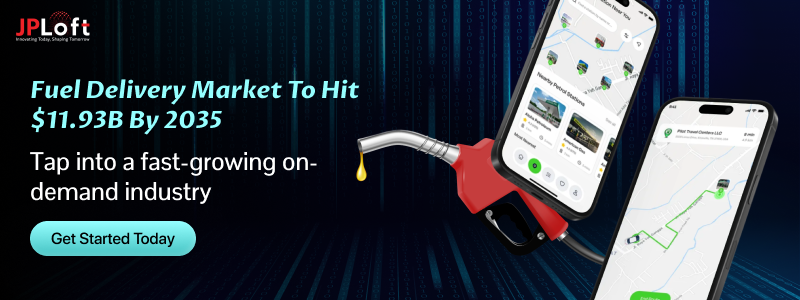
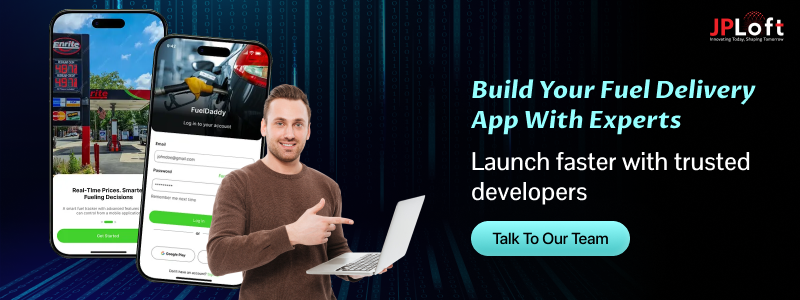

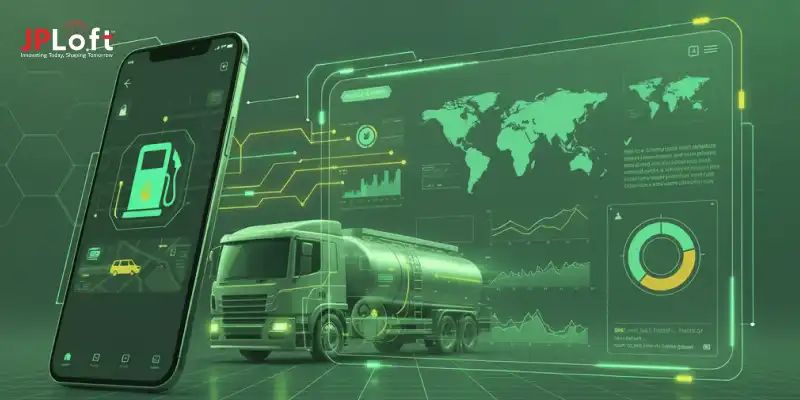
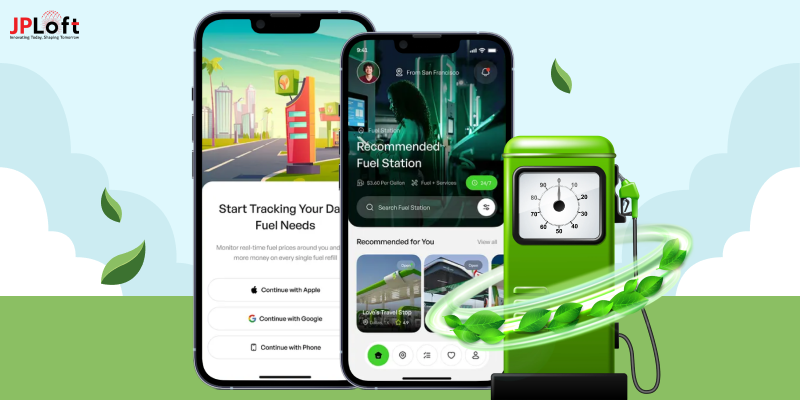
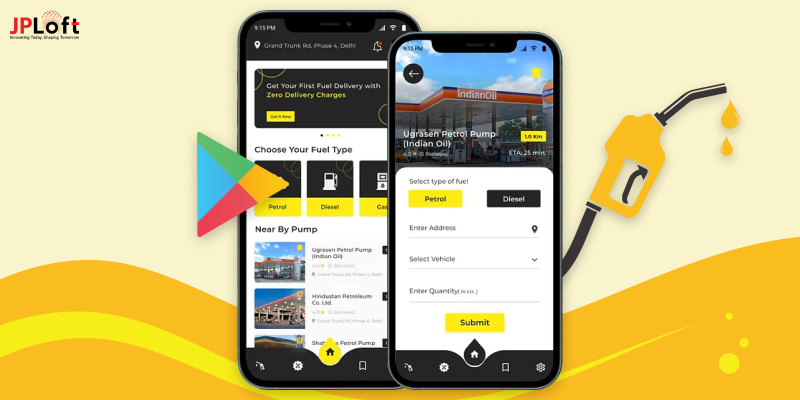


Share this blog